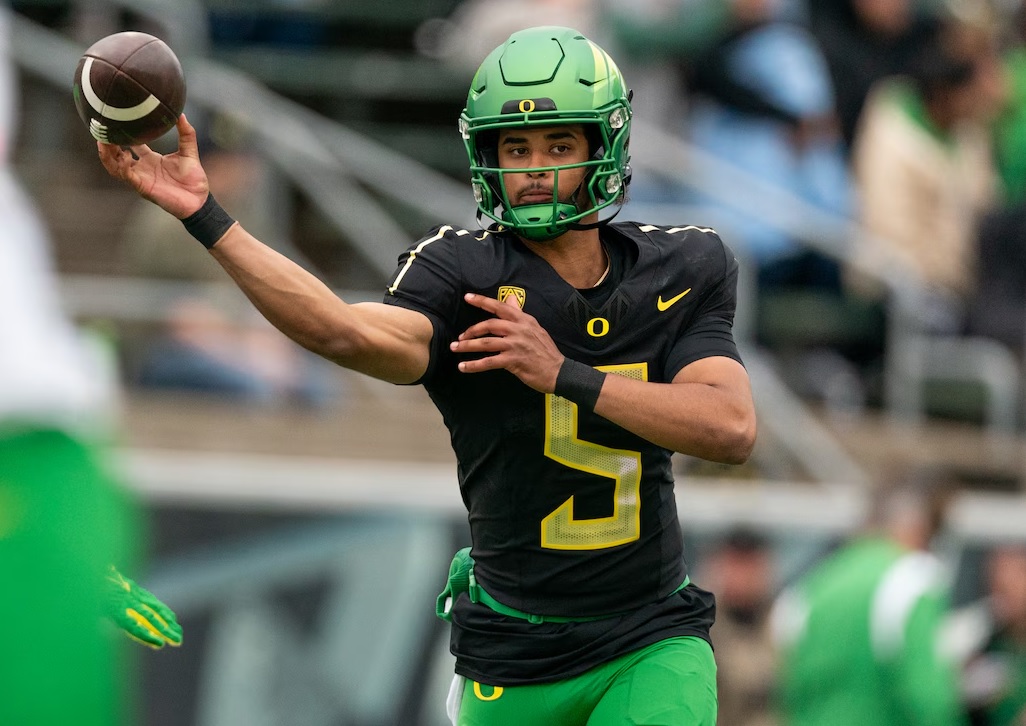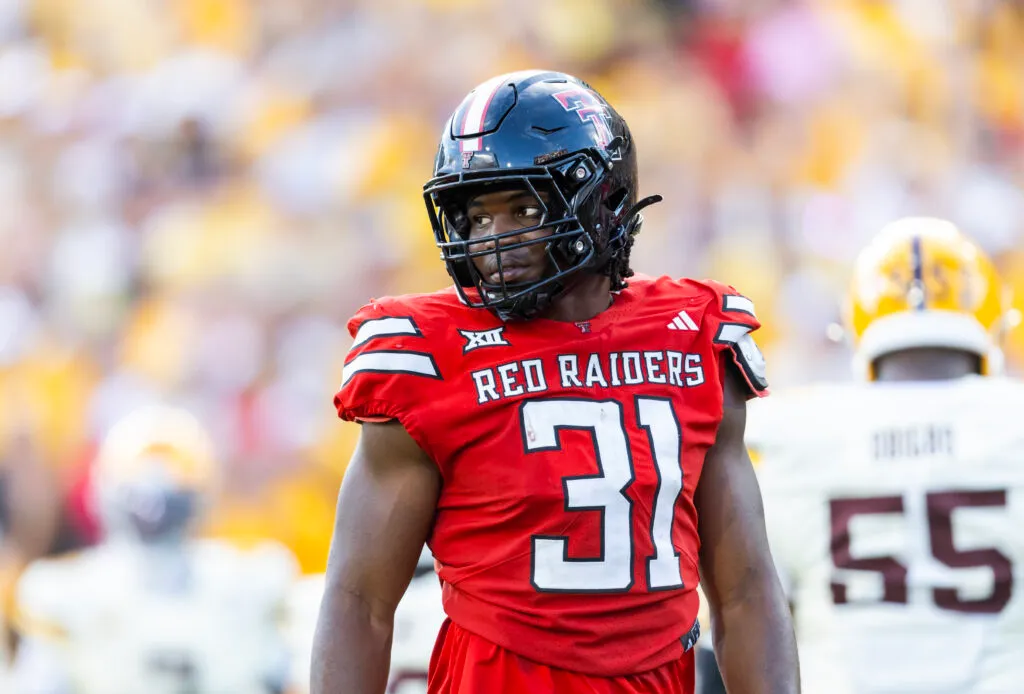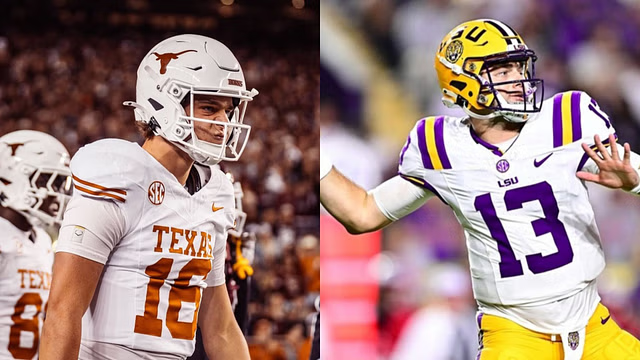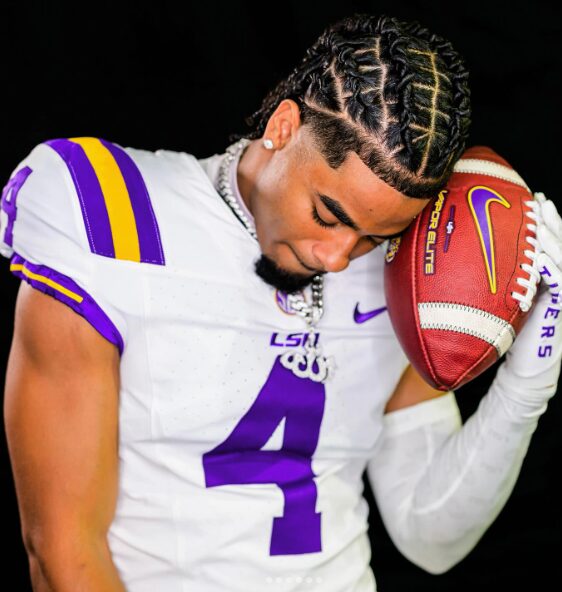By Charlie Campbell.
Send Charlie an e-mail here: [email protected]
Follow Charlie on Twitter @draftcampbell for updates.
This page was last updated April 1, 2019. Follow me @walterfootball for updates.
Guard Class
Early-round talent: A-
Mid-round: C
Late-round: C
Overall grade: B-
2019 prospects vs 2018
Quenton Nelson
Cody Ford
Jonah Williams
Erik McCoy
Frank Ragnow
Billy Price
Isaiah Wynn
Chris Lindstrom
Will Hernandez
Braden Smith
Mike Jordan
Connor Williams
Michael Deiter
Connor McGovern
Alex Cappa
Ross Pierschbacher
Last year, the guard class was top heavy with seven or eight players who were selected in the first two rounds, depending on how you classify players like Isaiah Wynn, Austin Corbett or Connor Williams. Wynn was projected to be guard by most, but New England had him at offensive tackle before a season-ending injury robbed him before the year got underway. Williams and Corbett were college tackles moved inside to guard.
If you were to merge the two classes, Quenton Nelson is hands down the best prospect. He is the best guard prospect to enter the NFL this decade. Cody Ford, Jonah Williams and Erik McCoy are better players than Frank Ragnow and Billy Price. However, the strength of the defensive prospects in the 2019 NFL Draft might push Ford and/or McCoy lower than where Ragnow and Price were selected. Chris Lindstrom is a comparable prospect to Will Hernandez. Michael Jordan is a better prospect than Connor Williams but not as good as Braden Smith. Michael Deiter and Connor McGovern are better third-round-caliber prospects than Cappa was. Ross Pierschbacher and Beau Benzschawel would go behind Cappa.
Safest Pick: Cody Ford, Oklahoma

Previous Picks:
2018: Quenton Nelson
2017: Forrest Lamp
2016: Sebastian Tretola
2015: Brandon Scherff
2014: Xavier Sua’Filo
2013: Chance Warmack
Looking back, it is too early to pass any judgement on Lamp because he was essentially a rookie last year after losing 2017 to injury. Otherwise, the rest of the list is disappointing. Tretola was a bust, meaning I was wrong on him. Su’a-Filo was a bad pick for the Texans, and Warmack was a bust for the Titans. Scherff is the exception as one of the better guards in the NFL.
I think Ford is a very safe pick to develop into a good NFL starter at right tackle or guard. He has excellent athleticism, quick feet, good size, and versatility. I think quickly he will become a good starter, and I believe he could become a Pro Bowler during his rookie contract.
Biggest Bust Potential: Ross Pierschbacher, Alabama

Previous Picks:
2018: Scott Quessenberry
2017: Pat Elflein
2016: Cody Whitehair
2015: Jeremiah Poutasi
2014: Chris Watt
2013: Brian Winters
Elflein and Whitehair aren’t world beaters, but they are solid pros. I was right on Poutasi, who was a bust for Tennessee and didn’t even make it two years with the club after being a third-round pick. Watt also was a bust, while Winters is serviceable but not very good.
Pierschbacher was a solid college player, but I don’t think he has the skill set to turn into a good pro. He has some limitations in terms of size, strength and athleticism. I think a team could draft him with hopes of him becoming a starter, but end up being disappointed that he’s unable to get to that status.
Guard Rankings by Attributes
Pass Protection:
NFL prototype: Trai Turner, Panthers
- Cody Ford
- Jonah Williams
- Erik McCoy
- Chris Lindstrom
- Mike Jordan
- Michael Deiter
- Connor McGovern
- Ross Pierschbacher
Recap: The NFL is a passing-driven league, so keeping a clean pocket as a pass-blocker is the attribute that the majority of teams consider first. Coaches want the guards to keep defensive tackles from gaining penetration or causing disruption. If the guards are successful, quarterbacks can step up in the pocket to avoid edge-rushers. This helps out the offensive tackles significantly. Additionally, good guard play provides better throwing lanes for the quarterback.
Against the pass, Ford has quick feet and surprising athleticism for such a big blocker. He has the ability to use his feet to wall off speed rushers and get depth in his drop. With rare agility for a big, thick blocker, Ford is able to hand speed rushers coming off the edge. His size also leads to him having a good anchor to stonewall bull rushes and keep them from pushing him back into the pocket. Ford’s pass-protection skills looked better at right tackle than his earlier time at guard, but for the NFL, he should be an asset at guard or tackle in pass blocking.
Williams is a very reliable pass blocker. He sets up well and plays the typewriter with his feet to keep defenders from getting around the corner. Williams uses his good hand placement and upper body to sustain his blocks while not allowing much give on second efforts. When he does allow a rusher to get upfield, Williams shows a nice ability to recover and tie up the defender, using any means necessary to keep them from getting to the quarterback. Elite speed or strength can give Williams some problems on the edge – see the tapes vs Georgia and Clemson -, thus many believe he should not be a left tackle in the NFL. That’s why I have Williams rated below these other players.
As a pass blocker, McCoy has some talent for the NFL. He is athletic with the ability to move his feet while maintaining his block. With strong hands at the point of attack, McCoy is able to control defenders when he latches onto them. He sustains blocks through the whistle and doesn’t lose on second efforts. He has good feel, awareness and intelligence. Against powerful tackles, McCoy shows some ability to anchor and stonewall some bull rushes. On double teams, he is very good to tie up defenders with his guards and keep them from getting after the quarterback. With his athleticism and ability to sustain blocks, McCoy shows a nice ability to handle speed rushers.
Lindstrom is polished in the passing game and is very reliable to keep his defender from getting heat on the quarterback. He is smart and adjusts well to games or stunts. Lindstrom does a quality job of riding defenders around the pocket when they try to beat him with speed. In the NFL, interior speed rushers could give him some issues because he does not have special athleticism and does not stand out for having quick feet.
Jordan is a pretty good pass blocker with athleticism and quickness to handle speed rushers. However, he can problems with slants and delayed blitzes. Those issues could potentially be cleared up in the NFL with good coaching.
Dexter is solid in pass protection. He has good technique and is able to anchor against bull rushes. Speed rushers could give him trouble in the NFL, thus he’s rated lower.
McGovern has a good anchor to handle powerful bull rushes, but fast three-techniques can give him problems. Improving against speed rushers will be a big point of emphasis for him in the NFL.
Pierschbacher does not have the speed and athleticism to handle NFL speed rushers one on one, and he can get overpowered by heavy nose tackles. Pierschbacher is going to need to be getting in on double teams rather than handling rushers one on one.
Run Blocking:
NFL prototype: Quenton Nelson, Colts
- Chris Lindstrom
- Cody Ford
- Erik McCoy
- Jonah Williams
- Michael Deiter
- Connor McGovern
- Michael Jordan
- Ross Pierschbacher
Recap: Guards are the engine of a good running game. They are the most important blockers for opening holes up the middle, in addition to pulling or moving on stretch runs. Dominant guards who can open up holes even when defenses know the run is coming, providing a mental edge, especially late in games. This is a pretty good class of run blockers.
In the ground game, Lindstrom can get some movement at the point of attack. He does not have the size of a dominating road grader, but he is strong and fires off the ball. He torques and manipulates defenders to get some openings for his back. Lindstrom also can get to blocks on linebackers and does a nice job of riding them out of a play when he gets a hold of them. Lindstrom is tough as nails, and that comes through in his run blocking.
Ford is an interesting player in the ground game. Given his size and bulk, many would think that he was a road grader going against the weak Big XII defenses, but that was not his game in college. Ford could generate movement as he would lean on defenders, get within their frame and push, and manipulate them. However, he was not a bulldozer who bullied defenders and rolled them around the field. Part of that could be scheme related as the Sooners employ a high-paced spread offense and don’t run an old-school downhill power run offense. In the NFL, Ford may not ever be a true road grader. But he should be a dependable run blocker who generates movement in the ground game at right tackle or guard.
In the ground game, Williams is a steady blocker who ties up his defenders. He is not a road grader who blasts defenders off the ball with overwhelming power. However, Williams is a smart blocker who beats defenders to the spot and uses his technique to tie them up or torque them away from his ball-carriers. Williams is not a power player, and he would be a good fit in a zone-blocking scheme.
As a run blocker, Deiter was productive for the Badgers the past few seasons. Off the snap, he fires off the ball and does a good job of locking up defenders. He can get some push and is able to turn them to help open holes. With his quickness and athleticism, Deiter can pull or get to the second level. He could stand to play with better leverage in the ground game to get more out of his size and weight. His skill set isn’t quite as good as the players ahead of him. Hence, he’s rated in the middle of the pack.
McGovern has developed upper body strength that he uses to tie up defenders. His strength allows him to torque defenders and turn them to help seal lanes on the inside.
Jordan played guard and center for Ohio State and was a more effective run blocker at guard than he was at center. He has some power to his punch, and at guard, he flashed some ability to push defenders backward. If can show more of that at center, Jordan would be a plus run blocker in the middle.
Pierschbacher is going to struggle to create any movement as a pro. He was a decent run blocker in college, but in the NFL, he is going to have to work in tandem with his guards and execute well within the scheme to have success.
Zone Blocking:
NFL prototype: Josh Sitton, Packers
- Cody Ford
- Erik McCoy
- Jonah Williams
- Chris Lindstrom
- Mike Jordan
- Michael Deiter
- Connor McGovern
- Ross Pierschbacher
Recap: The zone-blocking system is run by a number of NFL teams, and the success of the scheme has many power-man teams adding some zone plays into the playbook. The zone scheme calls for guards to have the ability to move well laterally and downfield to help set up a moving wall with cut-back lanes. Guards need the athleticism and quickness in order to be effective.
Ford has tremendous feet, athleticism, and quickness in a big body. He would be a great fit in a zone-blocking scheme because he is agile to get in position with the size to be hard to get around.
McCoy would definitely fit well in a zone scheme given his agility, athleticism and speed. Jordan is similar with good feet and athleticism that make him a good fit in a zone-blocking scheme as well.
Even though Williams does not have elite quickness, strength, athleticism or size, he would be a good fit in a zone scheme because he has excellent technique, and he excelled on zone runs for Alabama. He has enough speed and agility to get position plus demonstrates superb football I.Q. to be a technician who wins blocks on zone plays.
Lindstrom could get by in a zone-blocking scheme. He is not ultra quick or athletic, but he has enough of a skill set to execute such a system.
Deiter and McGovern possess enough functional quickness to execute a zone scheme, but both would probably be better fits in man schemes.
Pierschbacher could have enough ability to execute a zone scheme. He did run zone plays at Alabama. McGovern could fit in a zone scheme, but he probably would be better in man blocking.
Power Man:
NFL prototype: Marshall Yanda, Ravens
- Chris Lindstrom
- Cody Ford
- Jonah Williams
- Mike Jordan
- Michael Deiter
- Connor McGovern
- Erik McCoy
- Ross Pierschbacher
Recap: A lot of teams in the NFL run a power-man-blocking scheme. Guards for this scheme need the ability to defeat their defender to blast open or seal a running lane. Guards need to have the power to move defenders and sustain blocks.
Lindstrom has the ability to be a power-man blocker. His toughness is the first thing that jumps out about him, as he is a strong blocker who is tough as nails at the point of attack. That translates to him getting after tackles and really being effective in one-on-one blocks. He blocks hard through the whistle and mixes it up with defenders on every play. Lindstrom uses his strong hands, hand placement, and upper body strength to sustain his blocks and neutralize defenders from shedding his blocks.
Ford is a good fit in a man-blocking scheme. He sustains his blocks well in the ground game with his ability to lean on defenders, push them and generate movement. Williams plays angry and gets after defenders, but he doesn’t have the power to bull defenders in a way many would like to see in a man scheme.
Jordan, Deiter, McGovern and McCoy are all nice fits for a power-man scheme. Jordan has the most strength to push defensive linemen at the point of attack. McGovern has developed quality strength as well. McCoy and Deiter have enough ability with their technique to be effective in power-man blocking. All four should be able to make the transition smoothly to the next level. Pierschbacher could struggle in a pro power-man scheme.
Versatility:
NFL prototype: Kelechi Osemele, Jets
- Cody Ford
- Jonah Williams
- Connor McGovern
- Mike Jordan
- Erik McCoy
- Chris Lindstrom
- Michael Deiter
- Ross Pierschbacher
Recap: A lot of NFL offensive line coaches want to cross-train their interior linemen for another position, especially among the backup offensive linemen. It helps teams in making the decision on who to keep active on game days. Linemen who can play more than one position are highly valued. Coaches like guards who can play center or tackle if there is an injury in the middle of a game.
Ford is the most versatile of these prospects. Some are projecting him to guard and others to right tackle. Some team sources think a club could get away with playing him at left tackle given his feet and athleticism. Ford could be a starter and potentially a Pro Bowler at three of the five positions on the offensive line.
Williams could play tackle or guard, and Alabama wanted to make him its starter at center. He is a technician’s versatility to be moved around.
McGovern and Jordan both played guard and center in college. They have enough size and versatility to play both positions in the NFL as well. McCoy and has enough size and ability to play guard or center, but he is a better fit at center.
Lindstrom and Deiter are relegated to guard, while Pierschbacher should maybe only be a center only.
Pulling:
NFL prototype: Zack Martin, Cowboys
- Cody Ford
- Jonah Williams
- Erik McCoy
- Mike Jordan
- Chris Lindstrom
- Michael Deiter
- Connor McGovern
- Ross Pierschbacher
Recap: Pulling is absolutely necessary for a man-blocking system to work. Zone teams are becoming more diverse and are mixing in more power-man plays that have guards pulling. The quick and athletic guards of zone schemes do better pulling than isolating and charging straight ahead. Thus, a zone team will like to see a prospect’s ability to pull as well.
Ford could be dynamite as a pulling guard in the NFL. He is so agile, quick and balanced in his approach. He can dish out perfect blocks in space to open holes.
Williams is a smart technician who makes him very effective at pulling. He is quick and athletic enough to get out in space to hit a block at the second level.
McCoy has the quickness to bend around the line and is athletic to open a hole in space. His great athleticism was illustrated with a stellar combine and pro day. McCoy is a quick athlete who is excellent at pulling or getting out in space on screens. At Ohio State, Jordan was effective at pulling. He is agile and strong to knock back defenders with force.
Lindstrom can pull as well, although he isn’t an exceptional athlete. Deiter and McGovern are solid pulling guards, but in the NFL, their athletic and speed limitations could make them not as good as the players listed above. Pierschbacher pulled okay at Alabama, but he could have struggles in the NFL.
NFL Picks - Jan. 13
2026 NFL Mock Draft - Jan. 7
NFL Power Rankings - Jan. 5
Fantasy Football Rankings - Sept. 1




